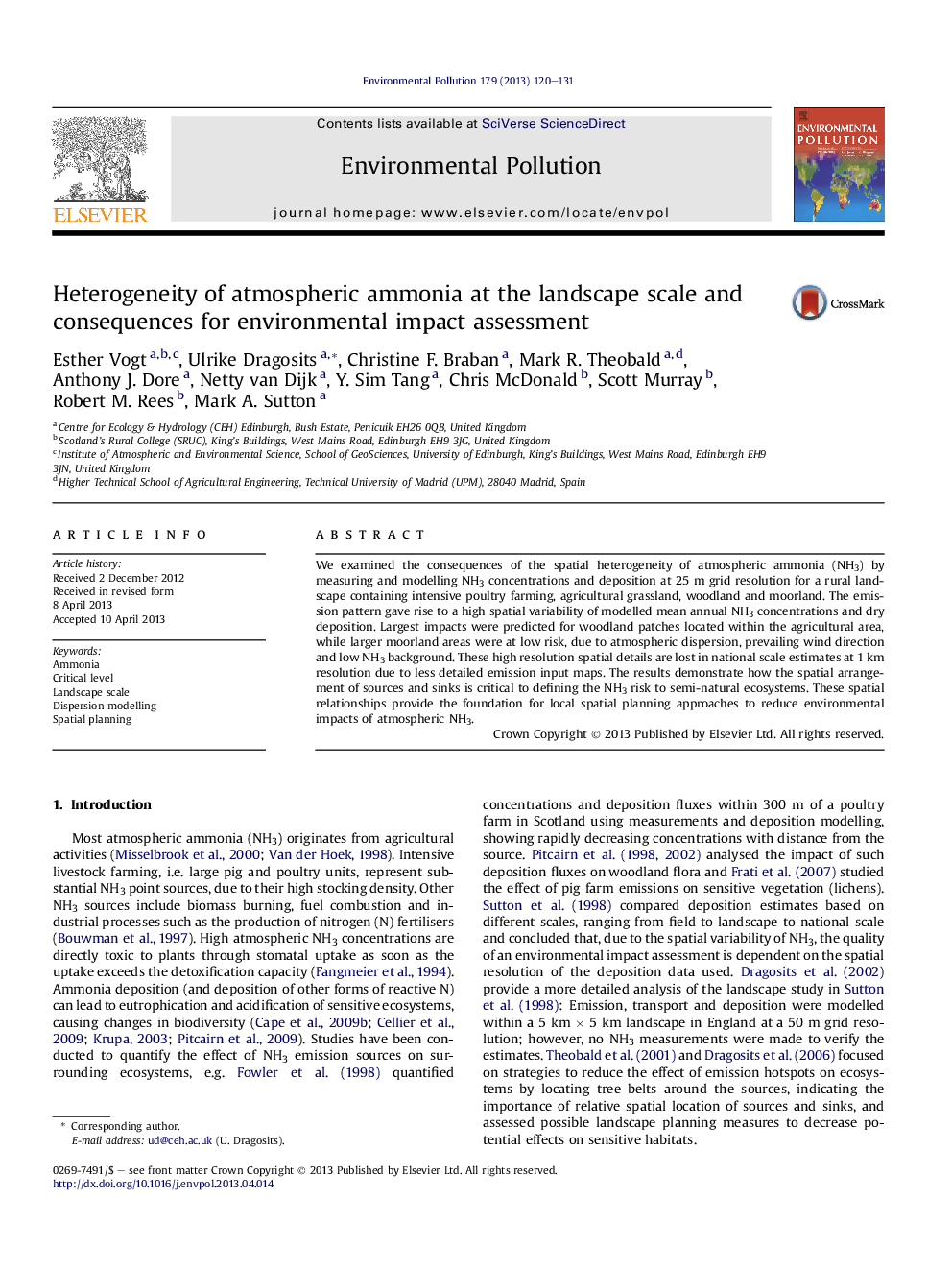| Article ID | Journal | Published Year | Pages | File Type |
|---|---|---|---|---|
| 6318736 | Environmental Pollution | 2013 | 12 Pages |
Abstract
We examined the consequences of the spatial heterogeneity of atmospheric ammonia (NH3) by measuring and modelling NH3 concentrations and deposition at 25Â m grid resolution for a rural landscape containing intensive poultry farming, agricultural grassland, woodland and moorland. The emission pattern gave rise to a high spatial variability of modelled mean annual NH3 concentrations and dry deposition. Largest impacts were predicted for woodland patches located within the agricultural area, while larger moorland areas were at low risk, due to atmospheric dispersion, prevailing wind direction and low NH3 background. These high resolution spatial details are lost in national scale estimates at 1Â km resolution due to less detailed emission input maps. The results demonstrate how the spatial arrangement of sources and sinks is critical to defining the NH3 risk to semi-natural ecosystems. These spatial relationships provide the foundation for local spatial planning approaches to reduce environmental impacts of atmospheric NH3.
Related Topics
Life Sciences
Environmental Science
Environmental Chemistry
Authors
Esther Vogt, Ulrike Dragosits, Christine F. Braban, Mark R. Theobald, Anthony J. Dore, Netty van Dijk, Y. Sim Tang, Chris McDonald, Scott Murray, Robert M. Rees, Mark A. Sutton,
